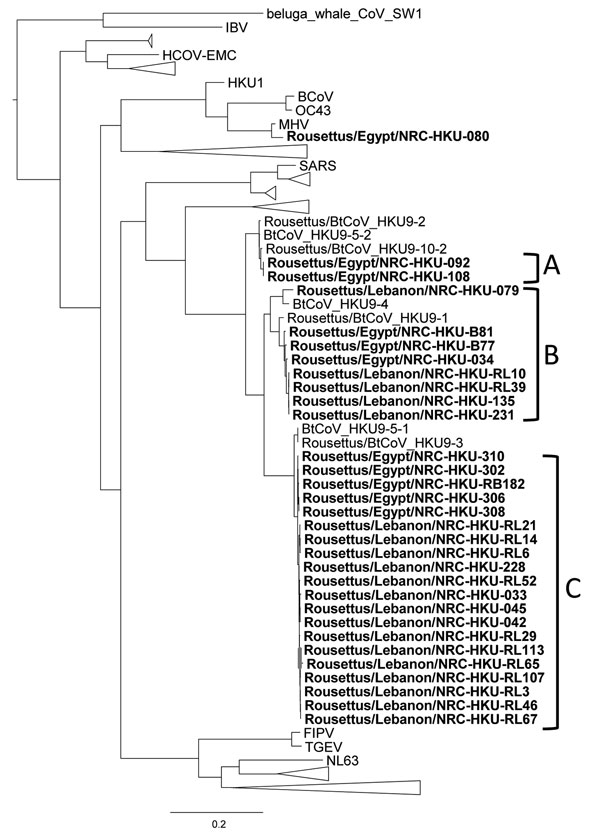Volume 22, Number 1—January 2016
Letter
Surveillance for Coronaviruses in Bats, Lebanon and Egypt, 2013–2015
Figure

Figure. Phylogenetic tree of the coronavirus RNA-dependent RNA polymerase gene. This tree was constructed on the basis of a sequence alignment of 330 bp using the neighbor-joining method. Bold text indicates sequences found in this study. Scale bar indicates nucleotide substitutions per site.
1These authors contributed equally to this article.
Page created: December 18, 2015
Page updated: December 18, 2015
Page reviewed: December 18, 2015
The conclusions, findings, and opinions expressed by authors contributing to this journal do not necessarily reflect the official position of the U.S. Department of Health and Human Services, the Public Health Service, the Centers for Disease Control and Prevention, or the authors' affiliated institutions. Use of trade names is for identification only and does not imply endorsement by any of the groups named above.